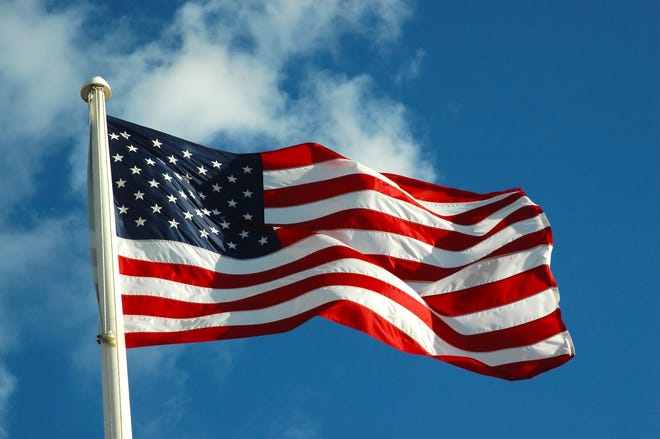Flag Day in the United States celebrates the adoption of the Stars and Stripes as our nation’s flag June 14, 1777. The holiday is observed every year on that date.
Flag Day wasn’t a nationally observed event until a proclamation in 1916 by President Woodrow Wilson. It also isn’t a federal holiday.
Beyond that, how much do you know actually know about one of our more overlooked annual holidays and the flag it honors?
A change is gonna come
Most Americans have heard the story of Betsy Ross being the creator of the U.S. flag (though history now mostly disagrees with that assessment).
In other news:If Roe v. Wade is overturned, how soon could abortion become illegal across the South?
For subscribers:A ‘sophisticated’ 7-part plan. ‘Slipping in people’s blood’: Takeaways from prime-time Jan. 6 hearing
It’s also clear that the original flag, which had 13 stars in a circle on the now-familiar blue background along with the red and white stripes, isn’t the same one we use today (it’d be pretty tough to get 50 stars in a circle without taking up most of the flag).
But how many times has the U.S. flag been altered and updated since its original design?
Over the years, there have been 27 changes to our nation’s banner since its creation, growing and evolving along with the nation it symbolizes.
The kids are alright
Speaking of the flag’s design, the last time it changed its look was in 1958.
When the time came for the flag to be altered, how was it decided what it would look like this go-around? A thorough search for the world’s best artists and their ideas? Perhaps drawing inspiration from some of the world’s other national flags?
Nope – it was a teenager from Ohio.
From among over 1,500 nationwide submissions, the design tendered by 17-year-old Robert G. Heft from from Lancaster, Ohio, was chosen by President Dwight Eisenhower. Though Heft passed away in 2009, his vision of the U.S. flag lives on as the longest-tenured version in national history.
Beyond Earth’s bounds
If space aliens ever come to our planet, the first visual indicator they may have that there is life on Earth could be the U.S. flag.
A total of six American flags have been placed on the moon. They’re all still there, though only five of the six have been photographed from Earth (the lone flag not captured by camera is from the famous first moon landing July 20, 1969, likely because exhaust from Apollo 11’s takeoff blew it over).
It’s also likely that the flags bear little resemblance to the stately standards they once were, as the ravages of space probably have left them badly faded.
Interesting firsts
The U.S. flag has been in some interesting places right here on our home rock, as well.
The first time the flag was flown overseas on a foreign fort was in 1805, when “Old Glory” sat above Fort Derne in Libya.
The highest point in the world, Mount Everest, was adorned with an American flag in 1963 when Barry Bishop planted it at the summit.
In staying with cold places in extreme locations, Robert Peary placed a flag sewn by his wife at the North Pole in 1909; he also cut off pieces of another flag and left them along the way during his trip.
This was the only time a person was honored after clipping off pieces of the American flag.
Read this:‘This place doesn’t want me’: How Alabama’s trans youth are facing anti-LGBTQ legislation
Colors of a nation
“The ol’ red, white and blue” has more meaning than you might realize. The colors aren’t random or there just because they happen to look good together.
According to the Articles of Confederation, the color red symbolizes hardiness and valor. White, meanwhile, means purity and innocence. The final color, blue, stands for vigilance, perseverance and justice.
All these traits are meant to be representative of the United States and its citizens.
J.J. Hicks is a news reporter at The Gadsden Times. He can be reached at jhicks1@gannett.com.

